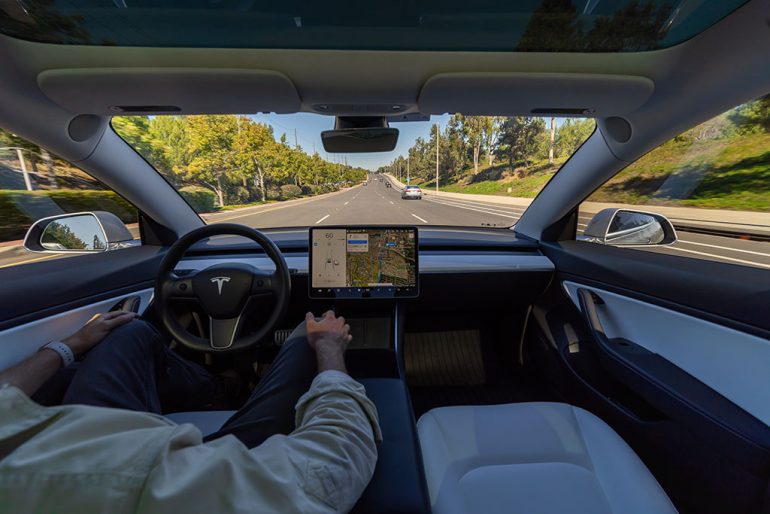
Tesla’s “Full Self-Driving” (FSD) system, touted by Elon Musk as the future of autonomous driving, is under intense scrutiny following a series of concerning incidents. William Stein, a technology analyst at Truist Securities, has tested the FSD system on three separate occasions in the past four months, each time encountering alarming behaviors from the vehicle. These experiences have fueled growing skepticism about Tesla’s claims that their autonomous technology is ready for widespread use.
Stein’s most recent test drive, which he undertook with his 16-year-old son, revealed unsettling flaws in the FSD system. In one instance, the Tesla Model 3 he was driving made an illegal left turn, running a red light in the process. Although there was little traffic at the time, Stein noted that the maneuver was “stunning” and potentially dangerous. On another occasion during the same trip, the vehicle began straddling two lanes, forcing Stein to take control of the car.
Also, don’t forget that you can get discounted new car pricing with a free quote through qualified local dealer partners.
These experiences are not isolated. In April, a tragic accident in Snohomish County, Washington, involved a Tesla using FSD. The vehicle reportedly rear-ended a motorcyclist, leading to the motorcyclist’s death. The Tesla driver, who was allegedly using the FSD system while distracted by his phone, has not yet been charged, but the incident has drawn significant attention from federal regulators.
The National Highway Traffic Safety Administration (NHTSA) has been investigating Tesla’s automated driving systems for over two years, with dozens of crashes raising safety concerns. The recent incidents, including Stein’s experiences and the fatal crash in Washington, have only heightened the scrutiny. NHTSA is also evaluating whether a Tesla recall earlier this year, intended to improve driver monitoring systems, has been effective.
Experts in autonomous driving remain doubtful about Tesla’s ability to deliver on its promises. Stein himself expressed skepticism that Tesla’s FSD system will be capable of operating safely on a large scale anytime soon. He also doubts Musk’s prediction that the company will deploy a fleet of autonomous robotaxis by next year.
Despite Musk’s bold claims that FSD will be safer than human drivers by the end of this year, evidence suggests otherwise. Tesla has released data showing miles driven per crash, but these figures are based on the less sophisticated Autopilot system and do not account for instances where human drivers had to intervene to prevent a collision. Critics argue that this data is not representative of the true safety of FSD.
The FSD system is currently in use by approximately 500,000 Tesla owners, many of whom paid $8,000 or more for the option. Tesla has cautioned that the system cannot drive itself without human supervision, despite its name. Recently, the company rebranded the system as “Full Self-Driving (Supervised)” to reflect this limitation. However, the ongoing safety concerns raise questions about whether the technology is ready for public use.
Alain Kornhauser, a Princeton University expert on autonomous vehicles, acknowledged that while Tesla’s FSD system performs well most of the time, it still requires human intervention in critical situations. He suggested that the technology might be better suited for limited deployment in smaller, controlled environments rather than on a large scale across the country.
Similarly, Phil Koopman, an autonomous vehicle safety expert at Carnegie Mellon University, warned that fully autonomous vehicles operating solely on artificial intelligence are still far from being able to handle all real-world situations. Machine learning, the backbone of Tesla’s FSD, lacks common sense and is prone to errors in unfamiliar scenarios.
Tesla’s electric vehicle sales have slowed in recent months, despite price cuts, leading Musk to position the company more as a robotics and artificial intelligence business than a traditional automaker. However, the ongoing issues with FSD cast doubt on Tesla’s ability to deliver on its ambitious autonomous driving promises.
For now, potential investors and Tesla enthusiasts are advised to critically assess whether the FSD system lives up to its hype. As Stein pointed out, it is important to determine whether Tesla’s artificial intelligence project, which has been in development for nearly a decade and is currently generating revenue, actually works as intended.
Tesla’s journey toward full autonomy is far from over, and while the company continues to push the boundaries of automotive technology, the road ahead remains fraught with challenges and unanswered questions.
Source: Associated Press